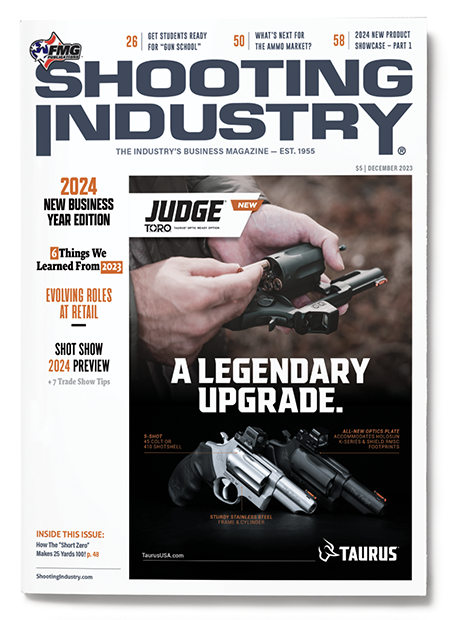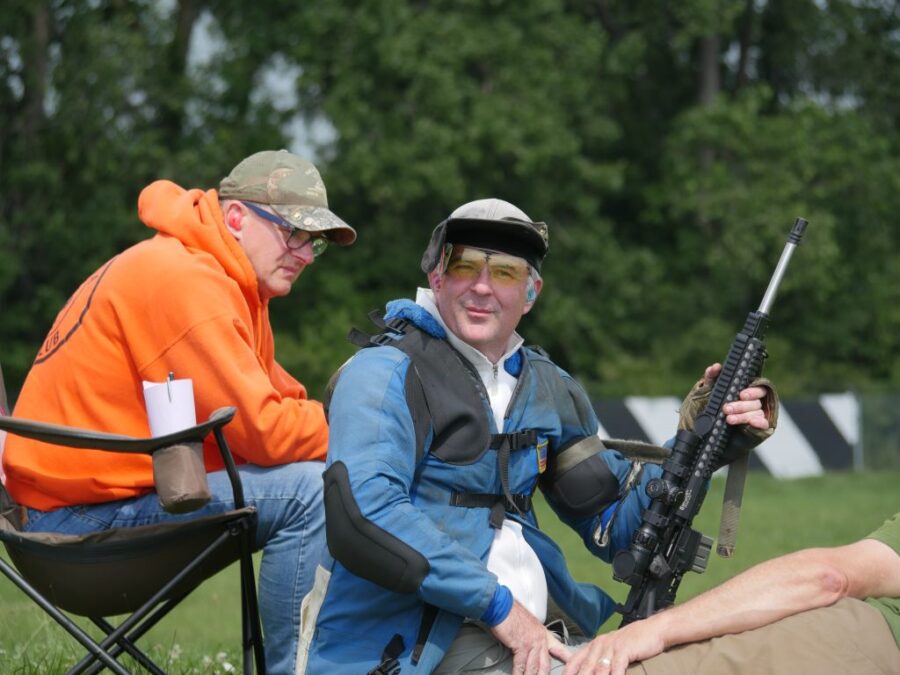Outfitting The Customer
For “Gun School”
Here’s a likely scenario: A customer walks into your shop and says, “I’m going to take a firearms training class, and I think I may need some stuff …”
Your advice will depend on a lot of things, not the least of which is whether the training in question is basic, intermediate or advanced. Your first question should be, “Did the school send you a list of what you will need?”
If the student doesn’t know, ask what class they’re going to at the school in question and take a quick computer cruise to the establishment’s website. There will usually be an equipment list for that particular class. In these instances, ensure your store furnishes “the right stuff” and you’ll reap the benefits of a repeat customer.
Handguns: Focus On Easy
Let’s say the customer is a first-time gun owner. Most handgun classes want centerfire handguns; 9mm is the logical choice. It will, in all probability, be what most of the other students are using. Recoil is mild, and the cost is so comparatively cheap it’s an unbeatable bargain, given current pricing.
If the customer has weak hands, you’ll want to sell him or her something with an easy-to-run slide. At the top of the list will be pistols designed expressly with this feature: the Walther PDP-F, for example, or any of the Smith & Wesson EZ series and S&W’s new Equalizer, among others.
Consider a 1911, the lightest “kicking” of 9mms. Just show the customer how to cock the hammer and relieve mainspring tension, leaving the light 9mm recoil spring as the only thing their hands will have to work against when racking the slide.
Long Guns: Get The Fit Right
For rifle and particularly shotgun classes, make sure the gun fits the shooter. Most conventional stocks are too long even for average-size males. Short-stock “youth models” should be used more than they are.
A telescoping stock on an AR-15 is advantageous. If your shop is in New York state or California, where the retracting stock is a prohibited “assault weapon” feature, you want to be able to outfit the rifle-class student with a shorter fixed stock.
Avoid Ridicule-Inducing Options
In times past, it was important to determine if the particular school had a “trademark pistol.” In Ye Olden Days, one didn’t go to the most famous shooting school, Gunsite, in Arizona, with anything but a 1911 .45. Anything else might bring on something between teasing and contempt.
Today, under the leadership of Buz Mills, this is no longer the case. Many of the Gunsite instructors carry 9mm GLOCKS or the S&W M&P — and there’s even a Gunsite Service Pistol version of GLOCK’s 9mm G45.
Make sure the new pistol fits the new shooter’s hand. Many of the polymer-framed pistols will come with optional backstraps. Take a few minutes to examine the interface of the customer’s hand with the gun in question, and make sure they leave the shop with the backstrap that gives them optimum fit.
If this has to be done at the class instead of the shop, the customer will be given the impression you sold him something that didn’t fit, and this is not the stuff of which repeat customers is made.
Essential Accessories
Holsters? It’s tough to beat a good-quality Kydex scabbard worn on the hip. Be advised some shooting schools prohibit appendix carry. There will be lots of drawing and holstering: Make sure the customer’s pistol is a good fit for the holster. Constant drawing and holstering drills are not the place to break in a new gun/holster combination.
Belts? An adjustable nylon gun belt of the Wilderness style is never a bad choice for anything except dressing up for court. Get a sense of the “culture of the school” the student is going to attend. Some of them want their students to train with the concealment gear they’ll be carrying. Some others attract students who come in wearing “battle belts” that look as if they’re preparing for a zombie apocalypse.
Magazine carriers? Make them open-top and friction-tight. The old flap-covered mag pouches may be useful for all-weather outdoor carry but are slow to work with when speed loads are demanded on a training range.
Speaking of magazines, if the school’s website or handouts say “bring three,” encourage the customer to take four or more. This will better guarantee they have enough for long drills. At a high-volume shooting class, the student with a single-stack gun — such as a 1911 — will likely be grateful to have more when trying to keep up with pistols using 17-round magazines.
If the customer wants to use a revolver — and there are still revolver-specific classes — make sure they have extra speedloaders or moon clips. The moon clips in particular are slow to fill and slower to pluck the empties out of. Safariland Comp III and JetLoader speedloaders are the fastest, but a little slower to refill than the ubiquitous HKS or other twist-release loaders. Open-top loader carriers will be the fastest to work with from the belt.
Ammunition Best Practices
Your customer wants to be sure to have enough ammunition. Find out what the school specifies for a particular class. If it’s 500 rounds, suggest the customer buy 600. For one thing, some schools allow “try each other’s guns” sessions after class. Some allow extra practice at the end of the day. And — you might not want to mention this, because the customer could take it the wrong way — a slow student may need some extra rounds for one-on-one remediation sessions with coaches during class breaks.
Make sure you’re selling training ammo you would trust. Some remanufactured ammo, such as the Black Hills brand, exhibits excellent quality … but others do not. The customer won’t go wrong with name-brand ball ammunition such as Federal’s American Eagle line, CCI’s Blazer Brass, Sellier & Bellot or Magtech.
Other Gear
Ear protection will be critical. If it’s a rifle/carbine class or even a shotgun class, suggest it’s loud enough for the student to “double up” with both earplugs and earmuffs. Strongly suggest active hearing protectors! The student wants to be able to hear instructor and range safety officer commands over volleys of gunfire. Advise the customer to put the active muffs on with the receivers pointed to the rear, to better pick up those critical safety commands.
Remind them to bring note-taking materials! Often, the most important takeaways from gun schools are what the students are told, not necessarily what they experienced.
Recoil-sensitive shooters should be accommodated for large volumes of gunfire. Those with sensitive hands might want a pair of recoil-absorbing shooting gloves, and for a shotgun class, suggest a Sorbothane recoil pad or even a shotgunner’s vest with padding on the shoulder.
For a carbine class, a tactical sling will generally be on the equipment list. Show the first-time user how to adjust it and sling the rifle. They’ll be grateful you kept them from looking like a fumbling bozo.
Having both attended and taught a great many classes, I can assure you students hate equipment that doesn’t work for them and resent those who furnished the same. Likewise, they will damn sure appreciate the dealer who outfitted them expertly and made their class a more beneficial experience.





